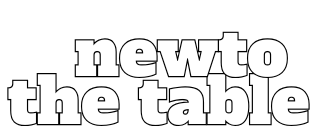In the ever-changing world of finance, mortgage interest rates can feel like a rollercoaster ride—thrilling yet nerve-wracking. Today, they might be your best friend, whispering sweet nothings about low payments, or they could turn into that annoying relative at family gatherings, reminding you of their unpredictability.
Understanding what mortgage interest rates are today is crucial for anyone thinking about buying a home or refinancing. With the right information, you can navigate this financial maze and snag a deal that feels like finding a unicorn in a field of horses. Buckle up as we dive into the current landscape of mortgage rates, and discover how a little knowledge can lead to big savings.
Table of Contents
ToggleOverview of Mortgage Interest Rates
Mortgage interest rates vary, influenced by market conditions, the economy, and individual financial profiles. Potential borrowers find themselves in a landscape where these rates change frequently. As of today, the average mortgage interest rate typically hovers around 6.75% for a 30-year fixed-rate mortgage. This figure serves as a benchmark for homebuyers seeking financing options.
Variations in rates occur based on several factors. Credit scores above 740 usually qualify for the lowest rates. Additionally, the loan-to-value ratio plays a role; a ratio below 80% often attracts better interest rates. It’s common for lenders to adjust their offerings based on these criteria, aiming to balance risk and attract qualified borrowers.
Market trends also shape the mortgage landscape. Federal Reserve policy, inflation, and economic indicators generate fluctuations. For instance, when the Fed increases rates to combat inflation, corresponding adjustments in mortgage rates follow. Current conditions suggest a gradual increase in rates, which reflects a tightening monetary policy.
Homebuyers and refinancers benefit from staying informed on these trends. Tracking mortgage rates through reliable financial news sources and tools assists in making well-timed decisions. Regularly checking rates can lead to securing more favorable terms and ultimately achieving significant savings.
Understanding mortgage interest rates keeps potential borrowers competitive. Knowledge of recent trends, lender criteria, and market influences empowers individuals to make informed choices on home financing. Keeping an eye on the current rates aids in identifying opportunities for savings in mortgages.
Factors Influencing Mortgage Interest Rates

Understanding mortgage interest rates involves various key factors. These elements shape the rates borrowers may encounter in the marketplace.
Economic Indicators
Economic indicators significantly impact mortgage interest rates. The unemployment rate, inflation rates, and GDP growth all play a role in determining borrowing costs. For instance, higher inflation often leads to increased mortgage rates as lenders adjust for potential loss in purchasing power. Similarly, strong job growth usually signals a robust economy, which can drive interest rates up due to increased demand for loans. Changes in these indicators can often result in immediate rate adjustments by lenders.
Central Bank Policies
Central bank policies directly influence mortgage interest rates. For example, when the Federal Reserve adjusts its benchmark interest rates, it creates a ripple effect throughout the economy. Increases in these rates generally lead to higher mortgage rates, as lenders pass on their higher costs to borrowers. Alternatively, when the Fed lowers rates, it can stimulate borrowing by making it more affordable. Monitoring central bank announcements is crucial for potential homebuyers, as these decisions can significantly affect financing opportunities.
Current Trends in Mortgage Interest Rates
Mortgage interest rates reflect current market conditions and economic trends. Understanding these rates is crucial for homebuyers and refinancing homeowners.
Fixed-Rate Mortgages
Fixed-rate mortgages maintain a constant interest rate throughout the loan’s life. As of now, these loans average around 6.75%. Borrowers often prefer this stability, knowing their monthly payments won’t change. The predictability aids in budgeting for homeowners over time. Factors such as credit scores and loan-to-value ratios influence the specific rate each borrower can secure. In a rising interest rate environment, locking in a fixed rate provides protection against further increases, making it an attractive option.
Adjustable-Rate Mortgages
Adjustable-rate mortgages start with a lower initial interest rate that can change after a set period. This type of mortgage offers potential savings when rates are initially lower. However, after the introductory period, rates may increase or decrease based on the market. Monitoring market trends becomes essential for borrowers who choose this option. Many homeowners appreciate the short-term cost effectiveness, but they must prepare for possible rate hikes. Evaluating personal financial stability and risk tolerance is critical before committing to an adjustable-rate mortgage.
Regional Variations in Mortgage Interest Rates
Mortgage interest rates exhibit significant regional variations across the United States. These differences often stem from local economic conditions, housing market dynamics, and competition among lenders.
In urban areas, such as New York City and San Francisco, rates may trend higher due to increased demand for housing. Buyers in these cities often face higher prices, influencing lenders to set elevated mortgage rates.
Conversely, rural regions frequently enjoy lower rates, attributed to less competition among lenders and reduced housing demand. The average mortgage interest rate in areas like the Midwest may hover around 6.50%, compared to 7.00% in more populated metropolitan locations.
State regulations also play a critical role in determining mortgage rates. States with fewer consumer protections tend to attract more lenders, fostering competitive rates. For instance, Texas and Florida often showcase enticing mortgage options due to their favorable regulatory environments.
Economic factors, like local unemployment rates and wage growth, directly influence regional rates. Areas with strong job markets usually see increased housing demand, pushing rates upward. In contrast, regions with high unemployment often experience stagnant demand, contributing to lower rates.
Keeping track of these regional variations can provide significant advantages. Homebuyers and refinancers benefit from understanding their local market conditions when negotiating with lenders. Engaging with local real estate professionals helps uncover the best rates available in any specific region.
Staying informed about mortgage interest rates is crucial for anyone looking to buy or refinance a home. With the current average rate hovering around 6.75% for a 30-year fixed mortgage it’s essential to understand the factors that influence these rates. By keeping an eye on economic indicators and regional variations borrowers can make more informed decisions.
Engaging with local professionals and regularly checking reliable sources will empower homebuyers to find the best financing options. Ultimately understanding the nuances of mortgage rates can lead to significant savings and a smoother homebuying experience.








